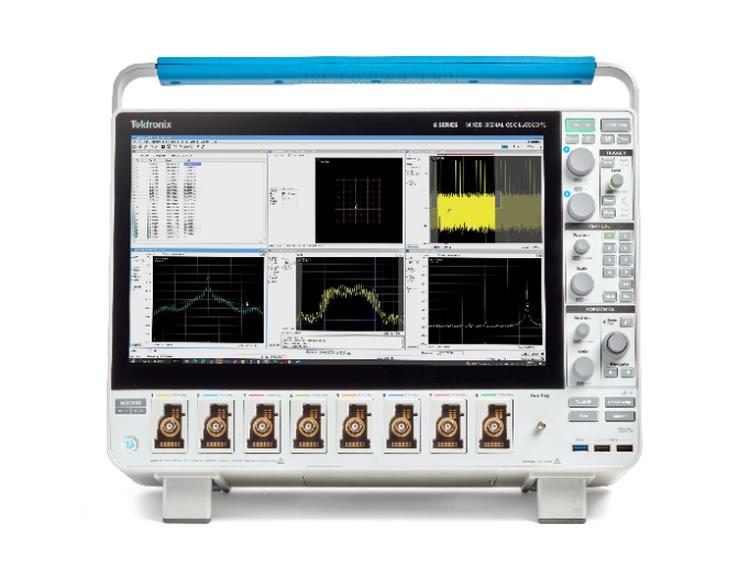Using Cross Domain and Multi-Channel Signal Analysis for Embedded RF Testing

Radio Frequency (RF) testing is a critical component in the development and validation of embedded systems, particularly in industries like telecommunications, aerospace, automotive, and IoT. As embedded systems grow increasingly complex, traditional RF testing methods are often insufficient to capture the intricate interplay of signals across multiple domains – time, frequency, and digital. Multi-domain signal analysis has emerged as a powerful approach to address these challenges, offering engineers a comprehensive view of RF performance. This blog explores the principles, benefits, and practical applications of multi-domain signal analysis in embedded RF testing, providing insights for engineers and developers aiming to optimize their testing workflows.
What is Multi-Domain Signal Analysis?
Multi-domain signal analysis involves examining electronic signals in embedded systems that belong to multiple different domains simultaneously to gain a holistic understanding of system behavior. The primary domains include:
- Time Domain: Analyzes signal amplitude and phase as represented over time, revealing transient behaviors, jitter, and timing issues.
- Frequency Domain: Examines signals represented as amplitude/power as a function of frequency, identifying spectral content, harmonics, and spurious emissions.
- Digital Domain: Analyze signals that are discrete in both time and amplitude that refer to logic circuitry, often encoded into specific communication protocols
By integrating these perspectives, multi-domain analysis provides a more complete picture of RF performance than single-domain approaches, enabling engineers to diagnose issues that might be missed when analyzing domains in isolation.
Why Multi-Domain Analysis is Essential for Embedded RF Testing
Embedded RF systems, such as those in 5G devices, radar systems, or IoT modules, operate in environments with complex signal interactions. These systems often integrate multiple RF components – transceivers, amplifiers, antennas – within constrained physical and power budgets. Multi-domain analysis is essential for several reasons:
- Comprehensive signal characterization: Embedded RF systems often exhibit behaviors that span multiple domains. For example, a spurious emission in the frequency domain might originate from a timing issue in the time domain. Multi-domain analysis correlates these phenomena, enabling faster root-cause identification.
- Compliance with standards: Modern RF systems must adhere to stringent standards (e.g., 3GPP for 5G, IEEE 802.11 for Wi-Fi). Multi-domain analysis ensures that signals meet specifications across time, frequency, and modulation domains, reducing the risk of non-compliance.
- Debugging complex issues: Issues like phase noise, intermodulation distortion, or modulation errors often manifest differently across domains. Multi-domain tools allow engineers to trace these issues to their source, streamlining debugging.
- Efficiency in testing: By providing a unified view of signal behavior, multi-domain analysis reduces the need for multiple test setups, saving time and resources in development and validation.

Key Tools and Techniques for Multi-Domain Signal Analysis
To implement multi-domain signal analysis in embedded RF testing, engineers rely on advanced tools and techniques. Some of the most commonly used include:Vector signal analyzers (VSAs) – versatile instruments that capture and analyze RF signals across time, frequency, and modulation domains. They can demodulate complex signals (e.g., QAM, OFDM) and provide detailed metrics like Error Vector Magnitude (EVM), phase noise, and spectral purity. Modern VSAs often include software suites that enable multi-domain visualization, making them indispensable for embedded RF testing.
Real-time spectrum analyzers (RTSAs) that excel at capturing transient and intermittent signals in the frequency domain with high dynamic range, critical for debugging issues like spurious emissions or interference. When paired with time-domain visualization and demodulation analysis capabilities, RTSAs offer a powerful platform for cross-domain testing. All RTSAs from Tektronix operate with SignalVu, the suite for comprehensive signal analysis offering multiple correlated views: spectrum, spectrogram, time overview, amplitude, phase, etc.
High-bandwidth oscilloscopes equipped with RF analysis software can perform time-domain measurements while also providing frequency and modulation insights. These are particularly useful for analyzing baseband and intermediate frequency (IF) signals in embedded systems. SignalVu on Tektronix Oscilloscopes brings all the advanced RF signal analysis capabilities of VSAs and spectrum analyzers on the scope, without needing separate instruments. SignalVu runs natively on the oscilloscope or via a connected PC and uses oscilloscope-acquired time-domain data for real-time or post-capture RF analysis, correlating RF domain events (like signal dropouts or spurs) with time-domain events (like power supply glitches or processor activity).
Software-defined radio (SDR) platforms that provide a flexible, programmable approach to RF testing. By combining SDRs with multi-domain analysis software, engineers can capture and process signals in real-time, enabling rapid prototyping and testing of embedded RF systems.
Signal processing software tools like MATLAB, Python (with libraries like NumPy and SciPy), or specialized RF analysis platforms that enable engineers to post-process captured signals. These tools support advanced techniques like Fast Fourier Transforms (FFT) for frequency analysis, time-frequency analysis (e.g., spectrograms), and modulation quality assessments.

Practical Applications in Embedded RF Testing
Multi-domain signal analysis is applied across various stages of embedded RF system development, from design to production. Here are some practical examples:
5G and IoT Device Validation
5G and IoT devices rely on complex modulation schemes (e.g., 256-QAM) and operate in crowded spectrum environments. Multi-domain analysis ensures that these devices maintain signal integrity under varying conditions. For instance, engineers can use a VSA to measure EVM in the modulation domain while simultaneously checking for spectral regrowth in the frequency domain.
Radar and Automotive Systems
In automotive radar systems, precise timing and frequency stability are critical for accurate object detection. Multi-domain analysis helps engineers verify pulse characteristics in the time domain, assess chirp linearity in the frequency domain, and ensure modulation fidelity.
Wireless Communication Modules
Embedded Wi-Fi or Bluetooth modules must comply with standards while operating in noisy environments. Multi-domain analysis can identify issues like co-channel interference (frequency domain), packet timing errors (time domain), or modulation distortions, ensuring robust performance.
Satellite and Aerospace Systems
Satellite communication systems require high reliability and low phase noise. Multi-domain analysis enables engineers to validate signal quality across all domains, ensuring compliance with stringent aerospace standards
Best Practices for Implementing Cross-Domain Signal Analysis
To maximize the benefits of multi-domain signal analysis in embedded RF testing, consider the following best practices:
- Define clear test objectives: Identify the key performance metrics (e.g., EVM, spurious-free dynamic range) and domains relevant to your system before testing.
- Select appropriate tools: Choose instruments and software that support cross-domain analysis and are compatible with your system’s frequency range and modulation schemes. As mentioned before, Tektronix 4, 5 and 6 Series are a great solution for embedded RF validation without the need of separate Spectrum Analyzers. They allow time correlated debug and modulation analysis directly from the oscilloscopes.
Correlate measurements across domains: Use visualization tools to overlay time, frequency, and modulation data, making it easier to identify relationships between anomalies. Spectrum View on Tektronix 5 and 6 Series MSO oscilloscopes is a built-in, hardware integrated real-time spectrum analysis tool that can complement SignalVu offering simultaneous time and frequency domain views and independent control over center frequency, span and resolution bandwidth thanks to a dedicated digital downconverter in each channel. Automate testing workflows: Leverage scripting (e.g., Python, SCPI commands) to automate multi-domain measurements, improving repeatability and efficiency. SignalVu-PC includes an automation interface (COM API) and an ecosystem of structured APIs that abstract away the low-level SCPI commands making automation faster, less error prone and more readable

Challenges and Future Trends
Cross-domain analysis on multiple channels can result in a very expensive and difficult to set up scenario, with different pieces of costly equipment to be synchronized by skilled operators. Additionally, processing datasets from multi-domain measurements demands data be collected on an external client with significant computational resources. However, an oscilloscope, despite not offering the same dynamic range of a RTSA and possibly less analysis options than an RF dedicated VSA, still represents a great compromise. In a single well-known instrument commonly used by engineers, you can get a high-level debug alternative "in one box". The vector analysis can occur in the machine with no need to export externally nor synchronize multiple units.
Trends Shaping the Future of Multi-Domain Signal Analysis
- AI and Machine Learning: AI-driven tools are being integrated into RF test equipment to automate anomaly detection and predict system behavior across domains.
- Cloud-Based Testing: Cloud platforms are enabling remote multi-domain analysis, allowing teams to collaborate and process data more efficiently.
- Higher Frequencies: As mmWave and terahertz systems become more prevalent, multi-domain analysis tools are evolving to support these bands.
- Integration with Digital Twins: Multi-domain analysis is increasingly paired with digital twin simulations to validate RF systems virtually before physical testing.
Conclusion
Multi-domain signal analysis is transforming embedded RF testing by providing a comprehensive, efficient, and accurate approach to characterizing complex systems. By leveraging tools like RTSAs and oscilloscopes with advanced software, engineers can diagnose issues, ensure compliance, and optimize performance across time, frequency, and modulation domains. As RF systems continue to evolve, adopting multi-domain analysis will be critical for staying ahead in the fast-paced world of embedded technology. Whether you’re developing 5G devices, automotive radar, or IoT modules, multi-domain signal analysis is a game-changer for achieving reliable, high-performance RF designs.


